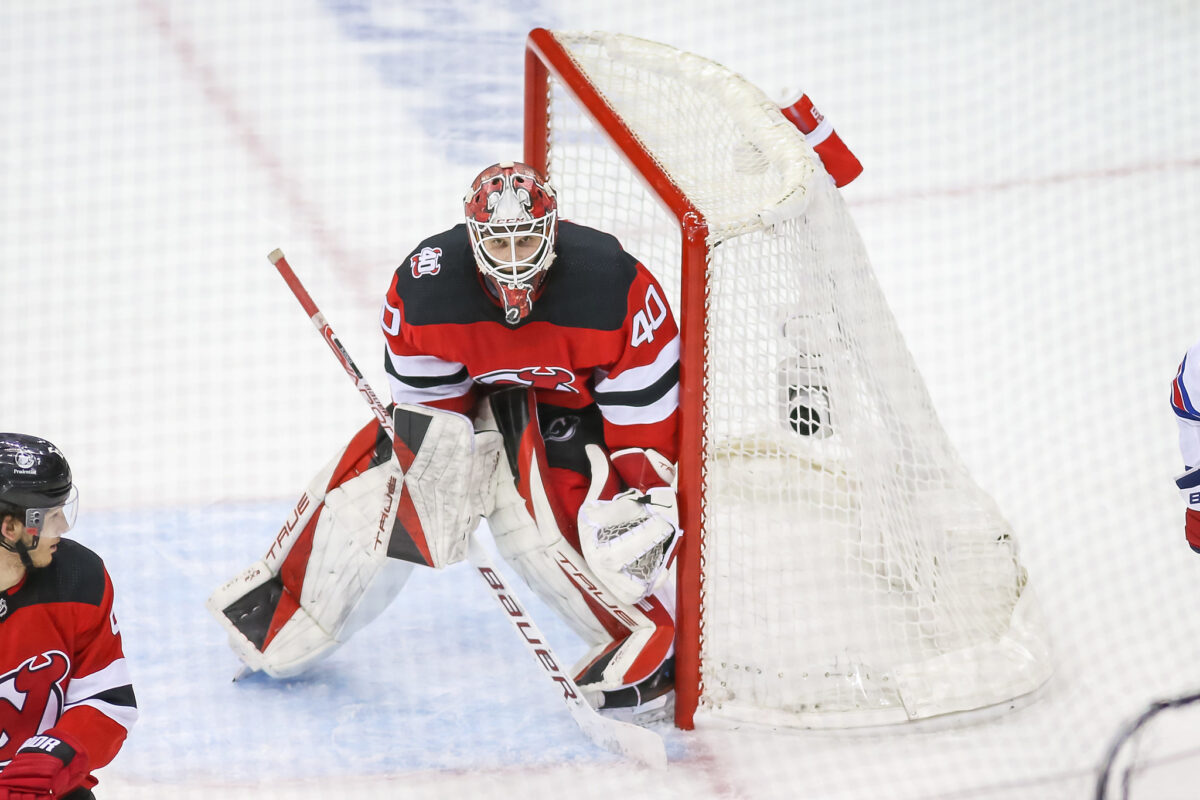The New Jersey Devils have certainly not met their sky-high expectations this season. As it stands, they sit fifth in the Metropolitan Division with a record of 19-13-2 — which, while sturdy in a vacuum, just isn’t cutting it in a stacked division. They sit in the second wild card spot, and with games at hand, they likely find themselves in a comfortable playoff spot soon. Still, the Devils entered 2023-24 as a favorite to win the Stanley Cup, and the team’s record simply does not match those expectations.
While the team has struggled to play up to the level they did last season, there’s an argument to be made that their record is less reflective of their play than it is on the schedule. For example, the Devils have the most back-to-backs in the league this season with 16. While yes, every team has back-to-backs in their schedule, it does seem as though the Devils have gotten the short end of the stick this season.
Related: Devils Acquiring John Gibson Would Come with Risks
Underlying Metrics Prove Unluckiness
Thus far into the season, the Devils have played seven back-to-backs — unsurprisingly the most in the NHL at this point — and have sported a record of 1-5-1 in the second-half games with a minus-11 goal differential (which would be much worse were it not for their one victory coming by a score of 7-2). The underlying statistics, however, tell a different story.
Outside of two games — Oct. 13 against the Arizona Coyotes and Dec. 10 against the Edmonton Oilers — the Devils have controlled the majority of the expected goals share (xGF%) in every one of those seven games. Some of them have been cases of outright domination where, much like the story of the entire season, the fault lies in the subpar goaltending. On Oct. 25, a 6-4 loss against the Washington Capitals, the Devils controlled 64.23% of the expected goals at 5v5 and their goalies (both of which played) gave up a combined five goals on 2.62 xG. Another prime example was their 6-3 loss to the San Jose Sharks on Dec. 1. In that game, the Devils had an astounding 70.29% xGF% at 5v5 and Akira Schmid gave up five goals on 1.52 xG. Sure, the Sharks goaltender Kappo Kakhonen had a strong game, but the more pressing issue was the Devils’ goaltender’s struggles.

Schmid’s struggles on the second half of back-to-backs are partly due to goalie mismanagement by head coach Lindy Ruff — he’s started both halves of a back-to-back twice this season and has gotten shelled in both games. That 6-3 loss against the Sharks came the day after he faced 50 shots in a victory over the Philadelphia Flyers. On Dec. 17 against the Anaheim Ducks, he was forced to play the day after defeating the Columbus Blue Jackets because Vitek Vanecek was unable to start the second game due to injury. He gave up four goals on just 2.54 xG in that game.
As a result of both their mediocre goaltending — and a hint of playing goaltenders who are riding a hot streak — during these back-to-backs, the Devils’ PDO during these games is extremely low. PDO is a metric used to determine “puck luck,” or how lucky a team is during a stretch of hockey, using a combination of the team’s shooting percentage (S%) and save percentage (SV%). On a league-wide scale, PDO will always equal exactly 1.00 — any given shot either hits the back of the net or doesn’t. A team with a PDO of over 1.00 can be considered “lucky” and expect regression, while a team below 1.00 is likely to expect the opposite effect. A very low PDO is considered to be around .98. The Devils’ PDO on the second half of back-to-backs? 0.97, and that’s buoyed by their 7-2 win over the Sabres, a game in which they had a PDO of 1.16 — and the only game of this type where their PDO was above 1.00.
With two healthy goaltenders and expected positive regression, the Devils should start to see a bit more success in these back-to-back endeavors. It’s much more accurate to chalk those losses to the Sharks and Blue Jackets up — both of which the Devils controlled the bulk of the xG — to poor performances by an exhausted Schmid than it is to say that the team itself performed poorly. With Vanecek playing like a league-average goalie recently, and American Hockey League savior Nico Daws coming up from Utica, I would be shocked if the Devils weren’t able to right the ship on back-to-backs with competent netminding. After all, the team itself has performed mostly admirably in those situations; the results just do not match the team’s efforts.
